23rd to 25th February 2020
Please Note: Videos covering the material in this blog post can be found at the bottom of this post.
There was no sign of Tom or Jane when we departed Windsong next morning but we now know that Jane exists. We heard her voice through the wall. The only sign of life was a group of small marsupials, one of which was peeping through our bedroom window.
We made our way back along the dirt track, through two closed gates, back to the highway and turned north towards Swansea. We passed the small roadside community hall that appeared to be Little Swanport as we headed for the turn off to Coles Bay and the Freycinet National Park.
On the way Ruth’s sharp eyes spied a tourist spot of which I had read. It was the Spiky Bridge. For some reason the builder finished its parapets with sharp stones on end. It is now bypassed by the main road but we drove across, just for fun. The bridge now leads to a farm gate.
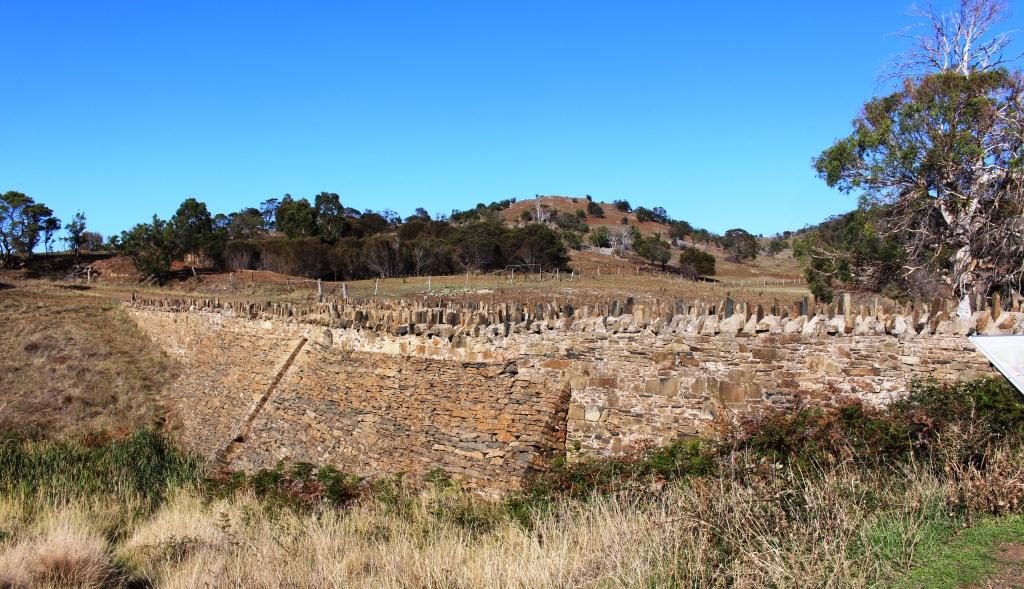
But there is a story. The government official who controlled the purse strings for such expenditure was holding out on providing funds for a bridge to span a troublesome stream. A local land owner took the official for a ride in his horse drawn cart and drove over the road through the creek bed at top speed. He proved his point. Money for the bridge was made available. The Spiky Bridge is the result.
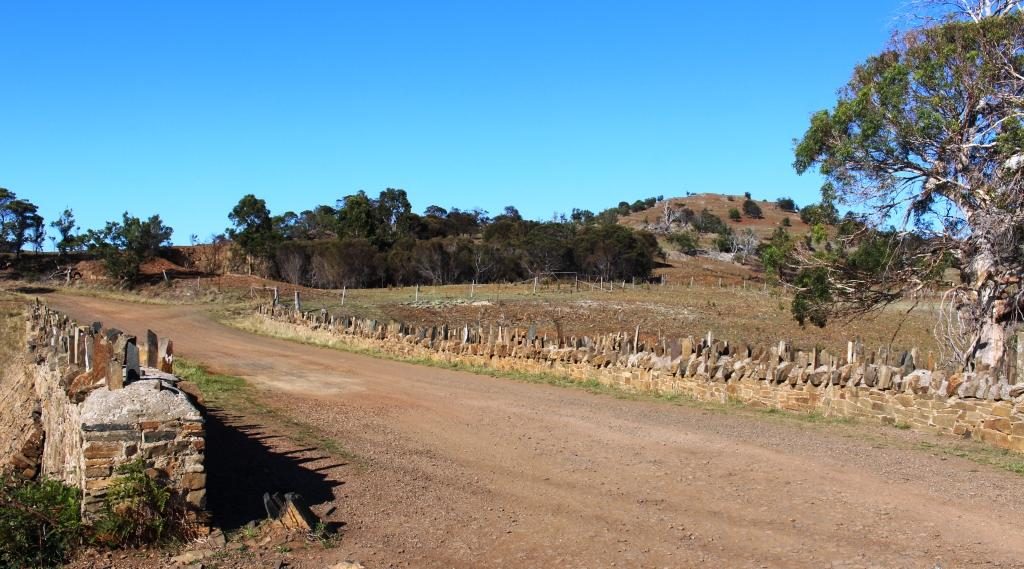
Continuing on, we crossed a mountain range and came upon Devils Corner. An extensive vineyard has been established there with vines planted on the lower slopes, reaching down towards Oyster Bay. A three level viewing tower has been provided as part of a visitor facility. The vineyard is well known for its Pinot Noir based wines. Views from the deck are among the best to be had of Oyster Bay and the Freycinet Peninsula.
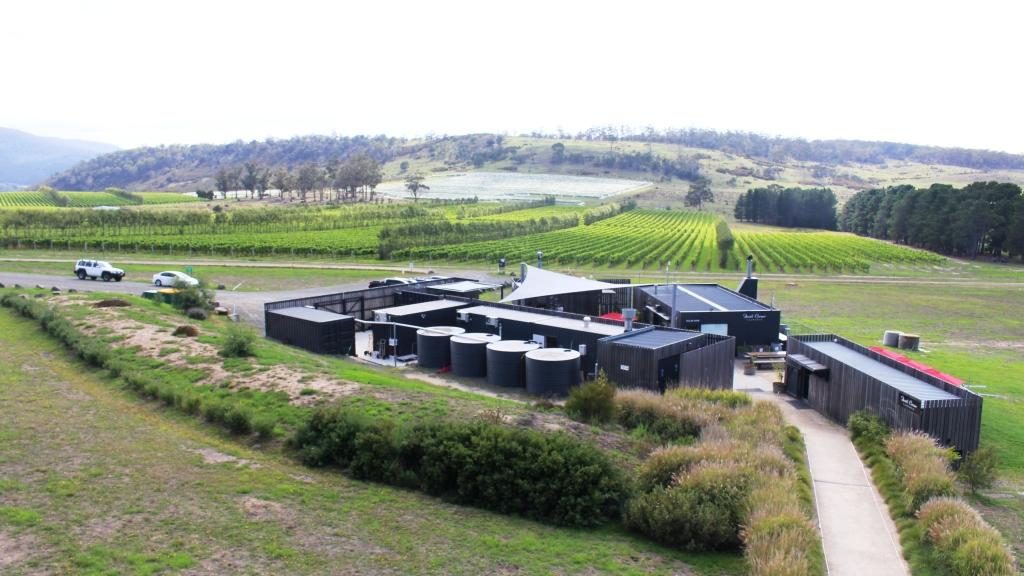
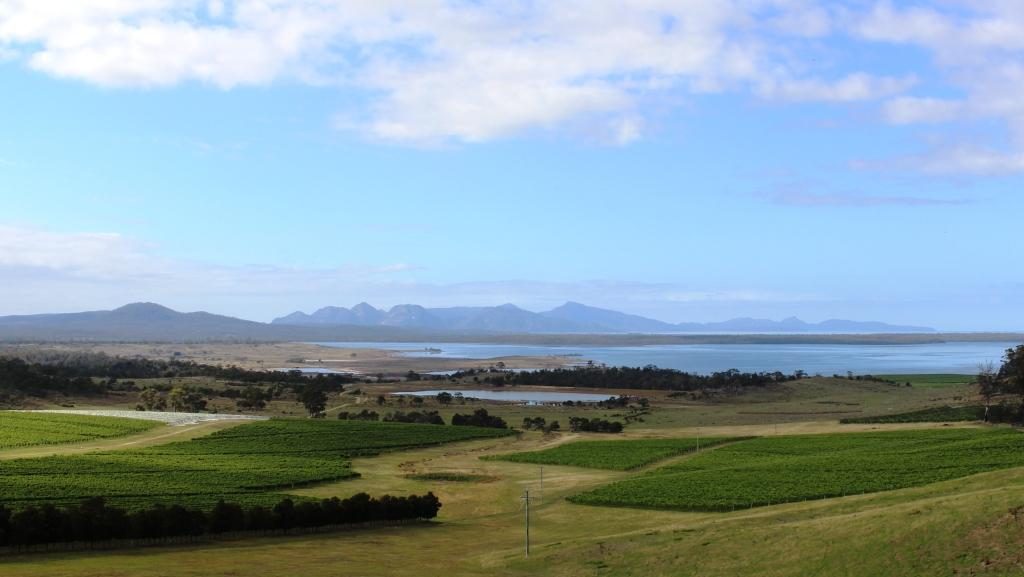
After coffee at Coles Bay we headed on into the park to the parking area for the walks to Wineglass Bay (a long walk) and the lookout (a much shorter walk). I intended to have a go at getting up to the lookout although I was a bit daunted by the 600 steps involved. But there was not a parking spot to be had in any of the three levels of the car park. Vehicles that could not find a parking space were parked nose to tail well back along the road towards Coles Bay. We decided not to add to the number fighting for a parking space. It would have been a long walk back just to get to the starting point.
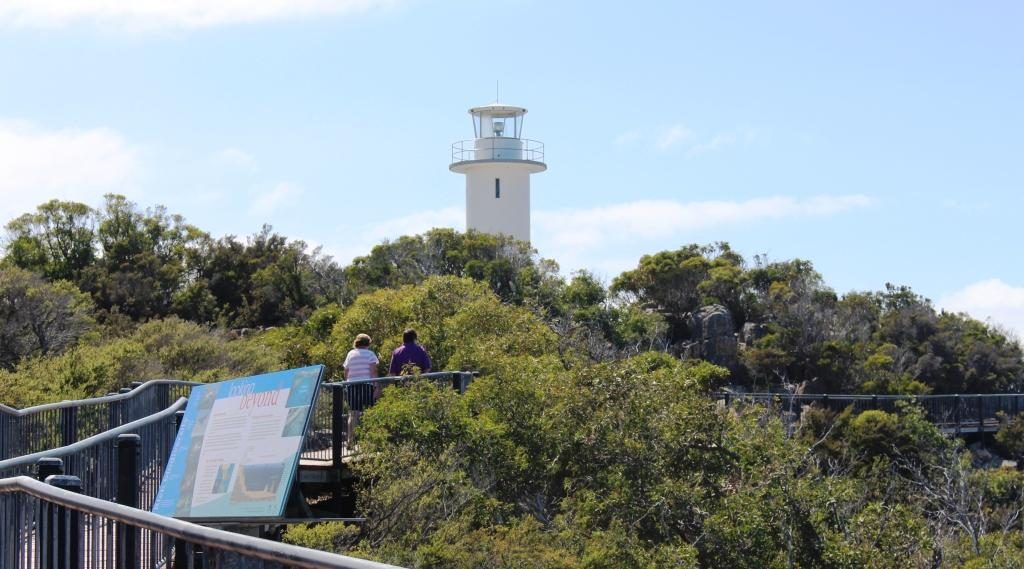
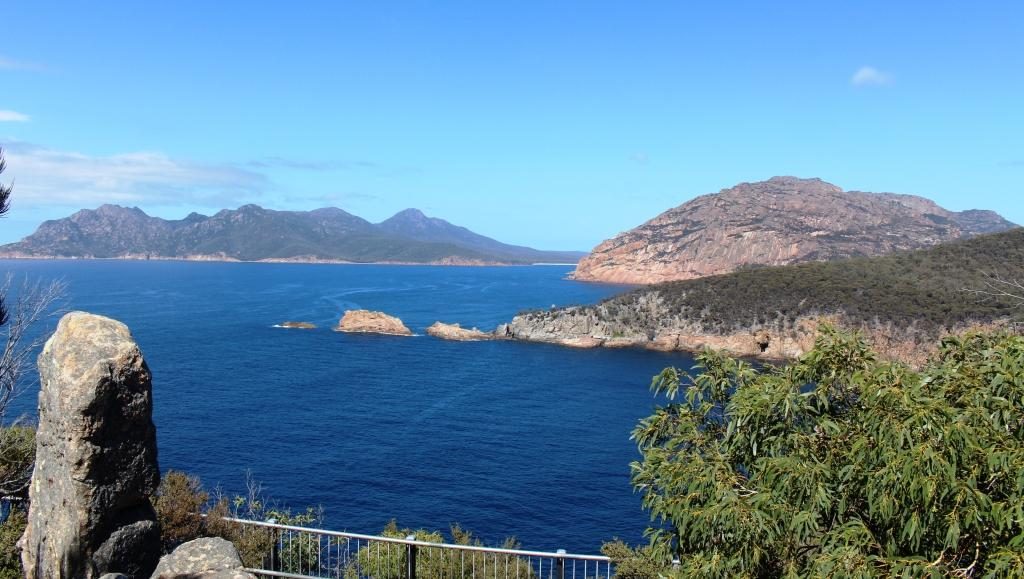
Instead we did the short but steep and winding drive to the Cape Tourville Lighthouse and lookout. The lookout is in the form of a board walk in a sort of semicircle around the edge of the cliff top, below the base of the lighthouse. The views south along the east coast are magnificent.
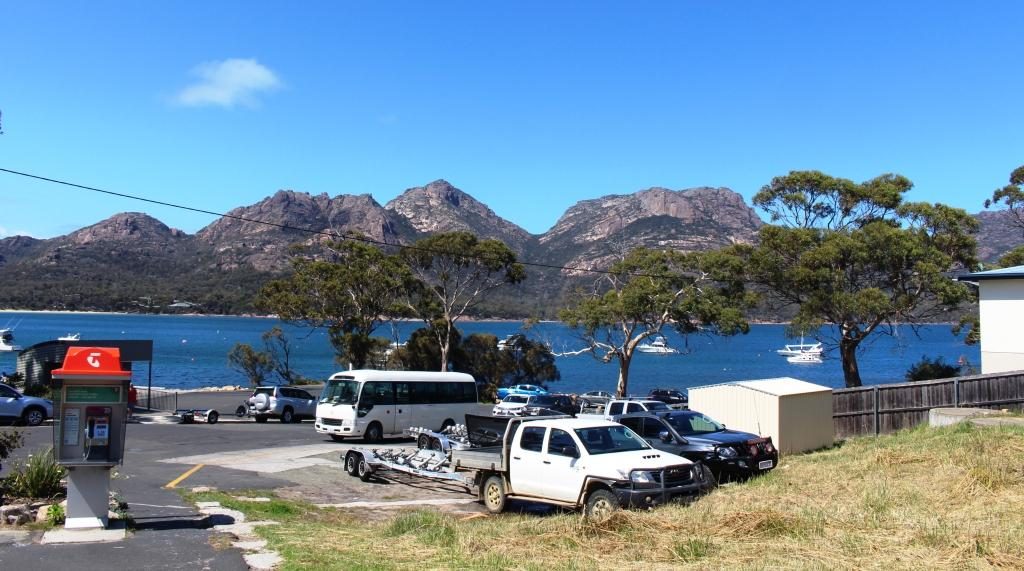
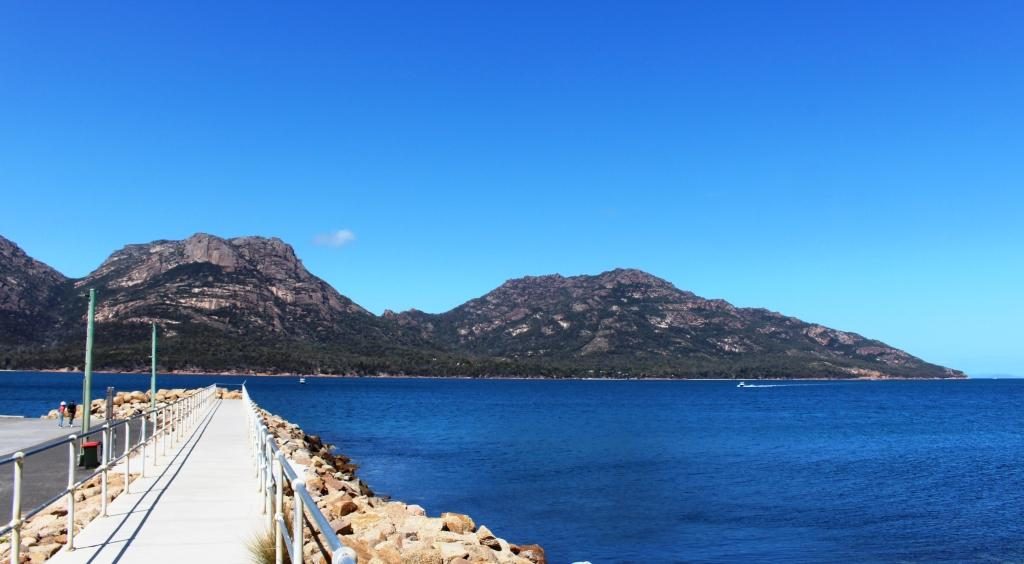
We returned from the lighthouse to Coles Bay for lunch. At the bakery I finally found a scallop pie. It met expectations. Not bad at all!
There is only one road in to Coles Bay so we retraced our steps to the highway and travelled another 12 km to Bicheno. Our accommodation for the next three nights is a ground floor studio apartment in an older two story house on the southern edge of town, overlooking the ocean.
The following day, Monday, the sun had fled. It was cloudy with that persistent Tasmanian cool breeze. The order of the day was a drive up the coast to St. Helens. But first some medical needs.
I’d had a sore on the side of my head for all the time we had been in Tasmania.Since I have had skin cancers taken off my head previously, we thought it should be checked. Or what if I was growing a second head? So, I sought medical advice. It was just a persistent boil. The doctor squeezed it out (Ouch!) and prescribed some antibiotic cream to for me to apply.
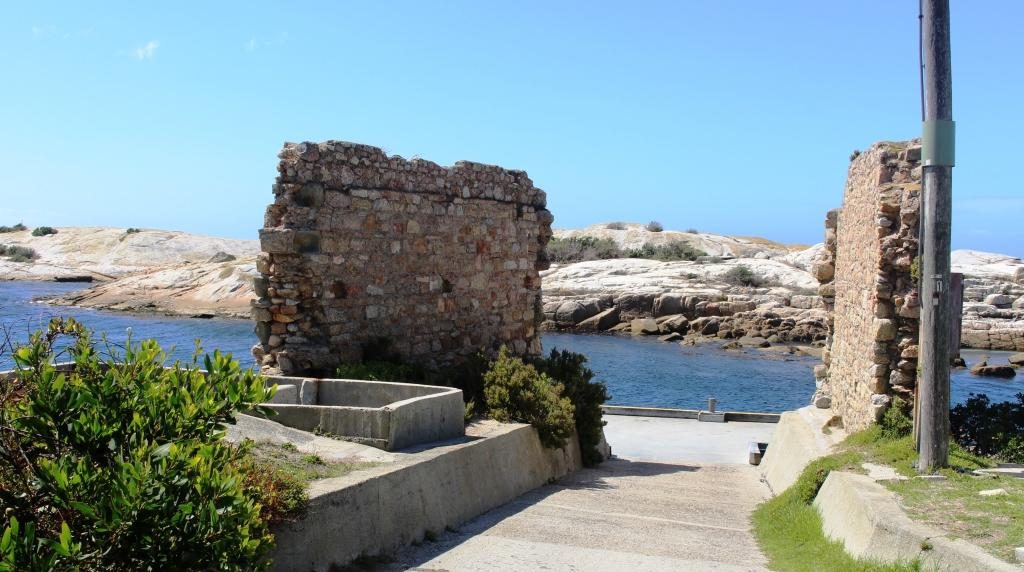
That got rid of most of the morning. We spent the remainder of the morning looking around Bicheno. The main town is a little way back from the water but the small harbour is worth a visit. It is the base for lobster fishermen who ply this rocky area of coast. The small harbour, known as the Gulch, is a narrow and deep channel between a large rook and the mainland, with another rock island of similar size close in and to the north east.

The buildings at the wharf include a very busy fish shop with dine in tables and a substantial take away business. Above the harbour, at the road side, a red building houses the Lobster Shack which features, as its specialty, the local lobster.
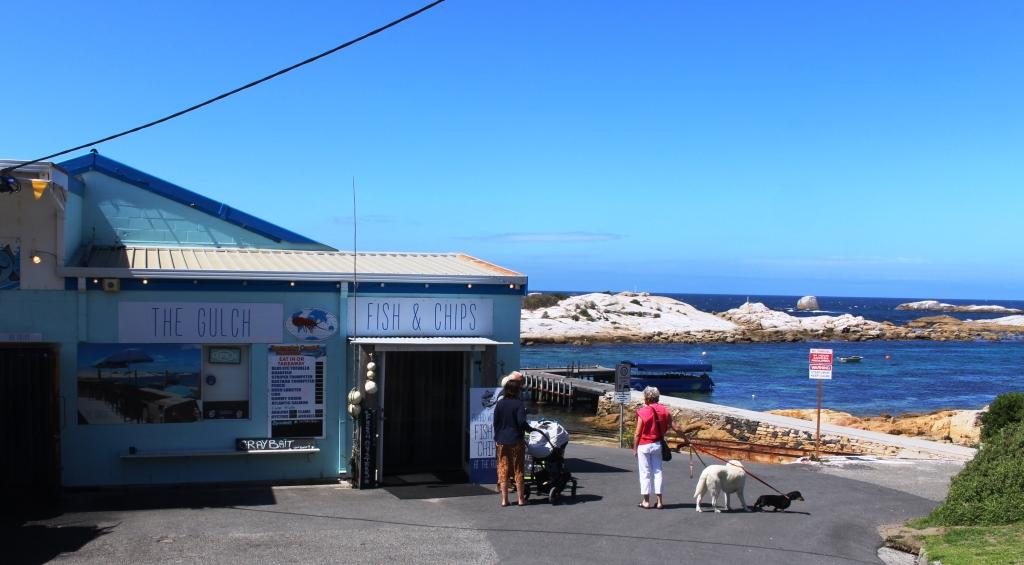
After lunch (not at the Lobster Shack) we embarked on the activity of the day. St Helens is about an hour further up the coast. The town is located at the furthest point inland of the rather long Georges Bay. The bay runs to north east to south west and is contained on its south eastern side by a long and broad peninsula, largely composed of sand. The town of Akaroa and the small wharf at Burns Bay are at its north eastern end.
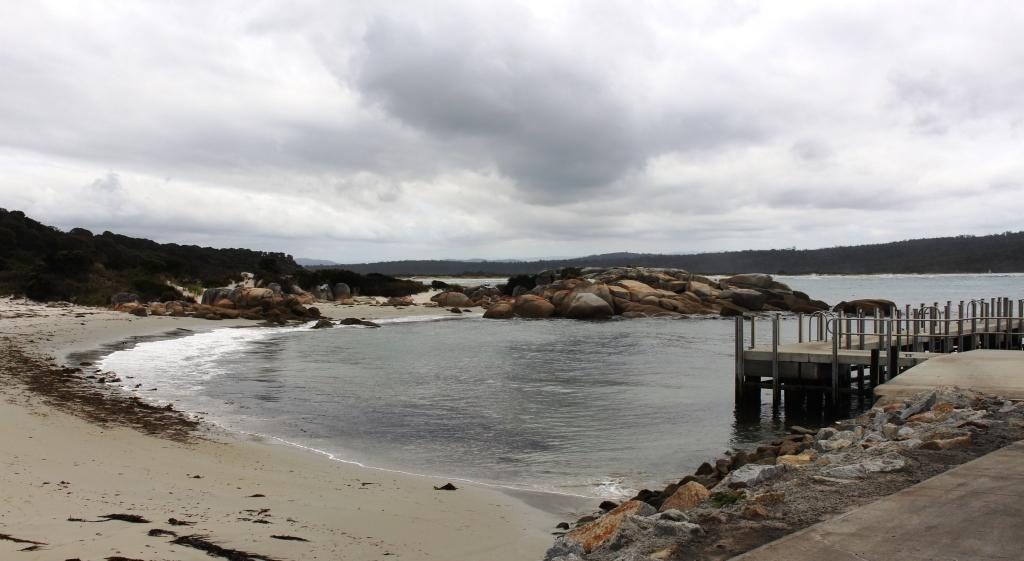
The first 10 km of the drive was along a decent road lined with houses, some of which enjoyed sweeping views of ocean and bay. Beyond the end of the road at the jetty the coast continues around to St Helens Point. The scenery is very attractive with white sand and large rocks, many of which are partly covered by red lichen.
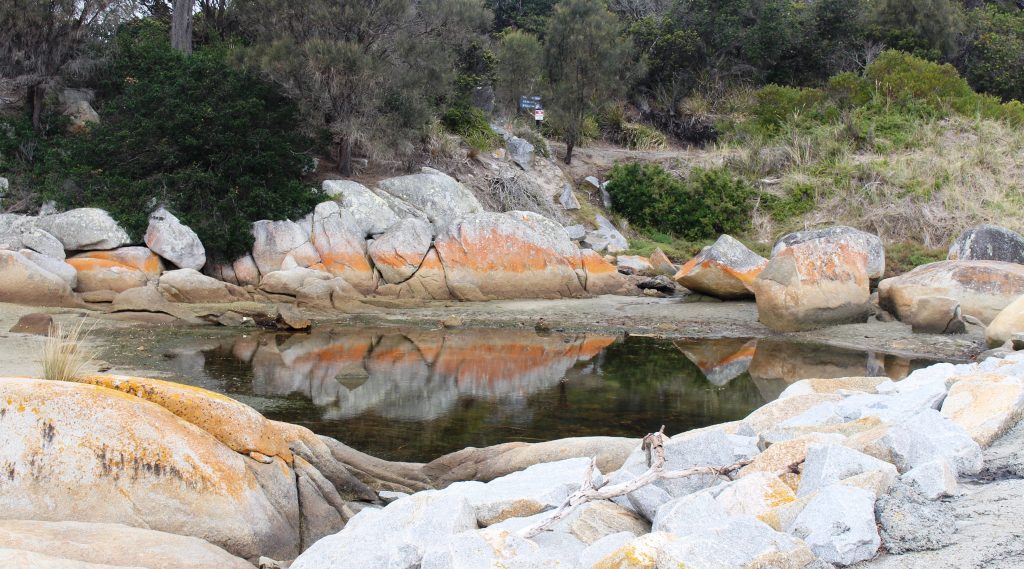
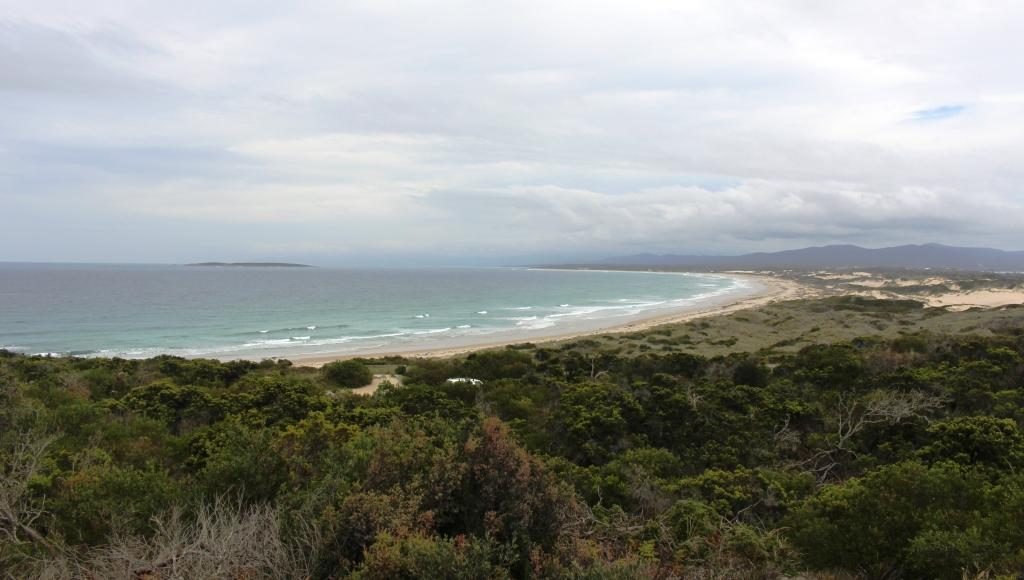
We drove through St Helens and on the extra 10 km to Binalong Bay, mainly because Binalong Bay marks the southern end of the long series of indentations into the coast known as the Bay of Fires. The bay was named by Captain Tobias Furneaux in 1773, because of the many fires that he observed along that strip of coast.
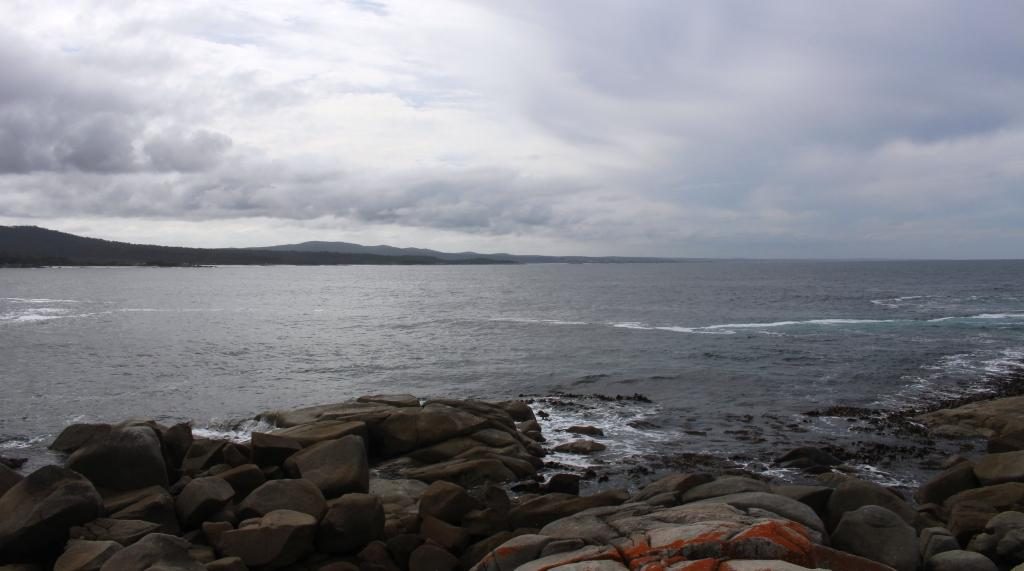
The Bay of Fires runs all the way from Binalong Bay to Eddystone Point. That is 61 km by road but probably about 35 km in a strait line. The southern headland is formed by huge boulders with many smaller boulders surrounding them. Their unique feature is patches of rusty coloured lichen, like those that we saw at Burns Bay.
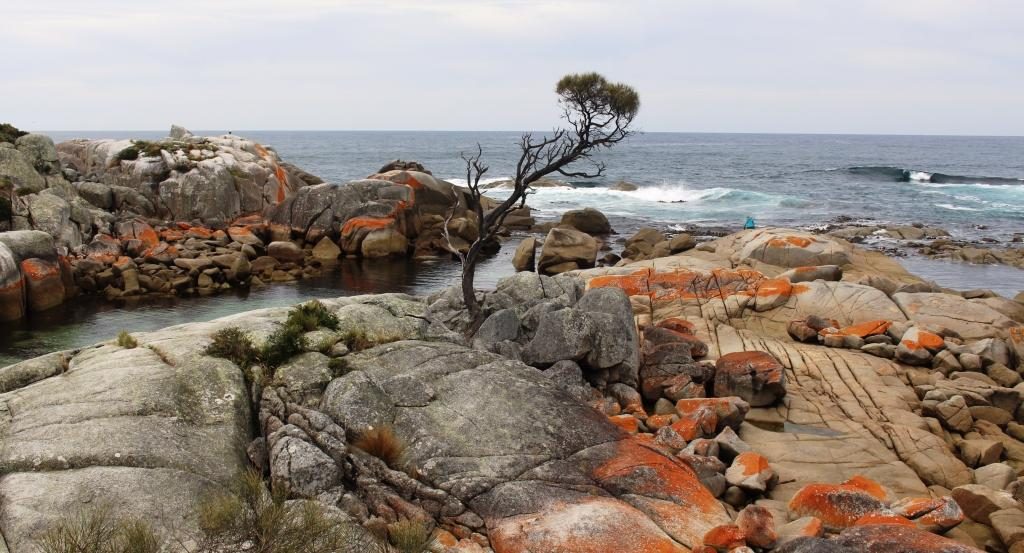
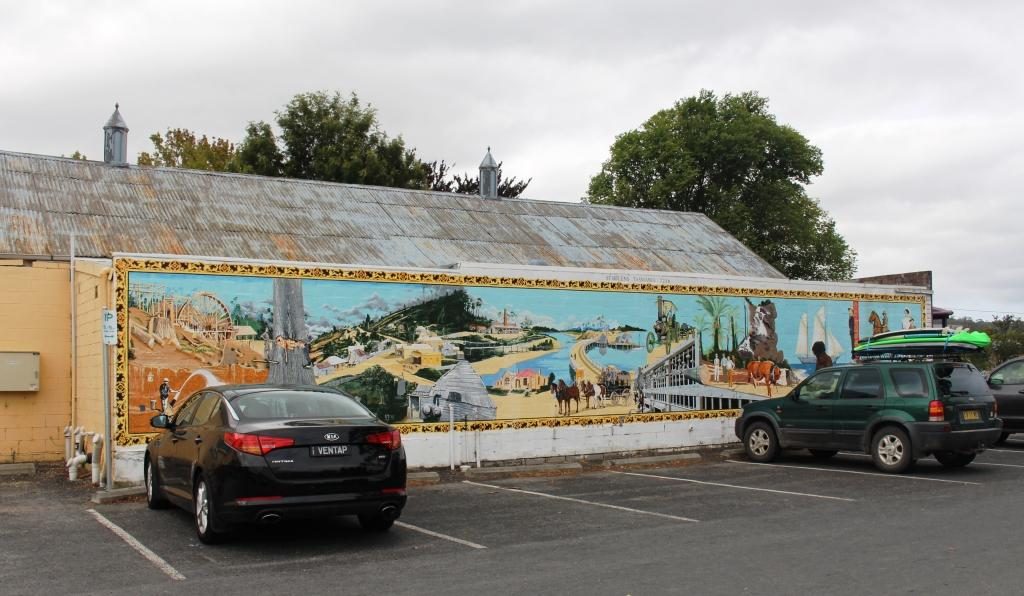
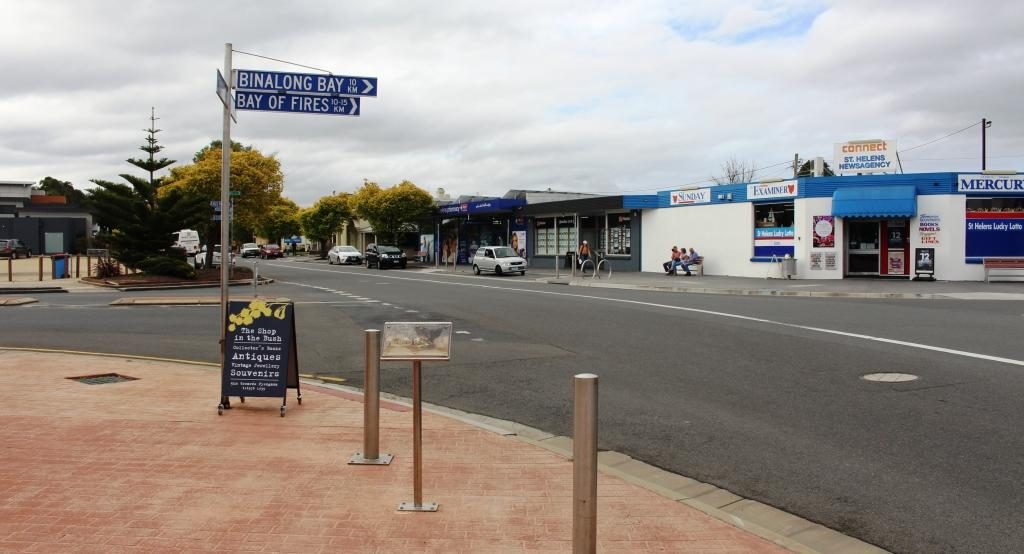
St Helens has a substantial fishing fleet. Oyster beds are located in many of its bays and inlets. It is the largest town on the east coast of Tasmania.
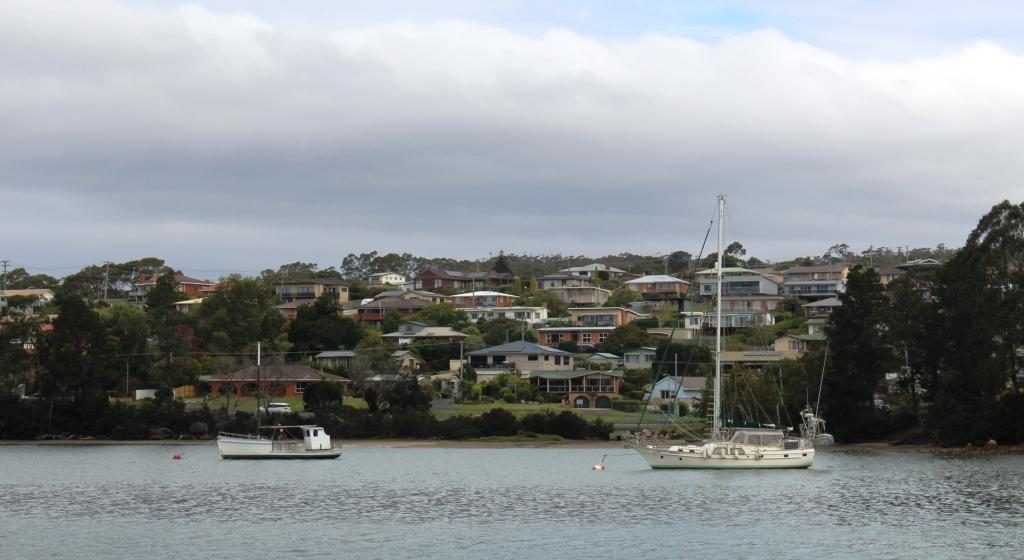
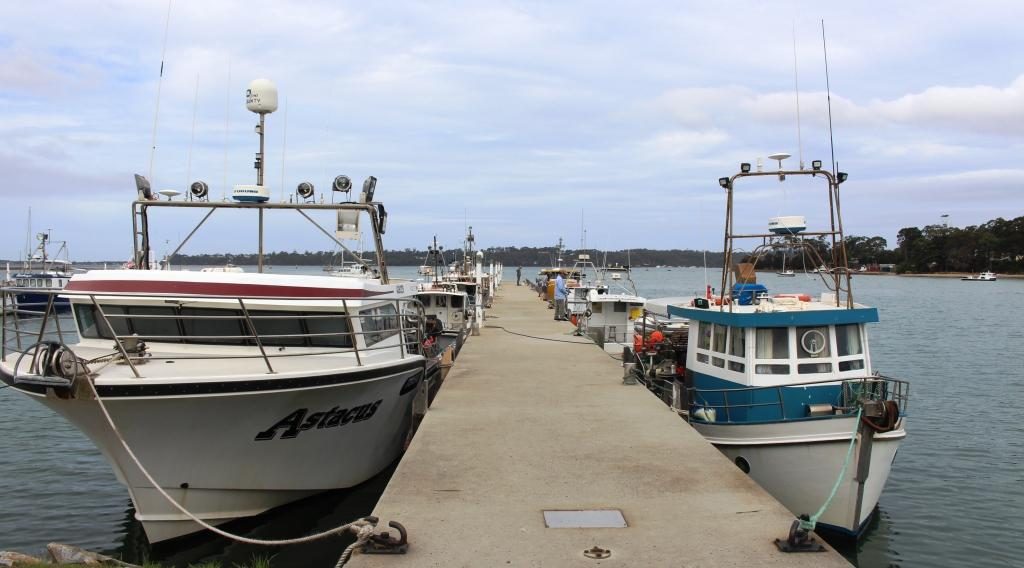
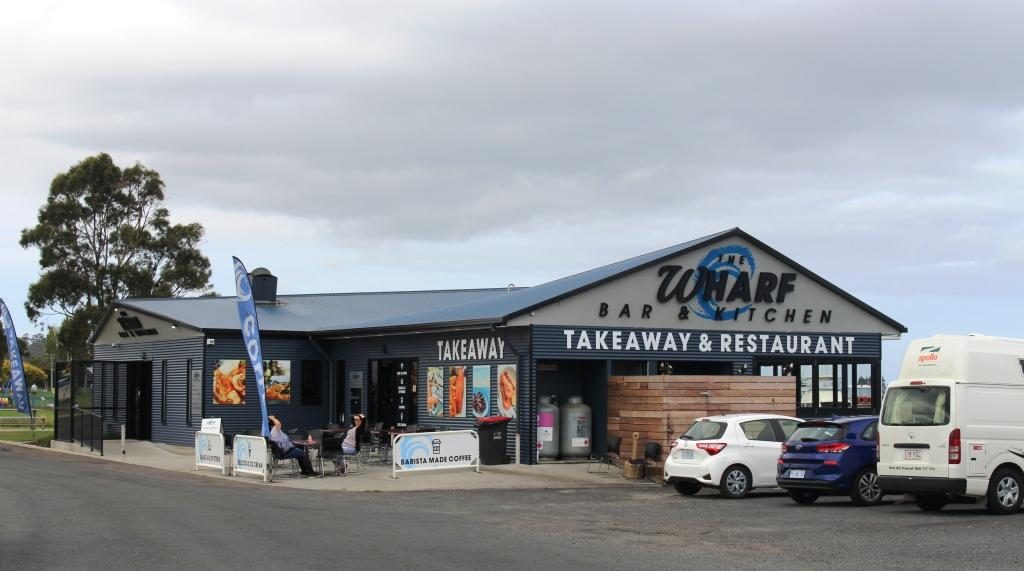
The only other town that we drove through, both coming and going, was Scamander. It is located where a stream, which cuts the town in half, also cuts through the sand to reach the sea. Like every town along this stretch of coast, where hills overlook the sea, they are covered by houses built by those seeking that magic ocean view.
For the first time in Tasmania we were seeing green fields that were not the result of irrigation. It is mostly sheep country but vineyards regularly appear by the road side, many with cellar doors and restaurants. Tourism is as important to this part of Tasmania as to any other. The upper east coast is a very comfortable drive from Hobart and has a superior climate. Grey nomads and not-yet-grey backpackers are there in considerable numbers.
We used our second day at Bicheno to travel inland to see the area that we missed by not travelling directly between Hobart and Launceston. The route took us south, back past the road into Coles Bay and past Devils Bend. The road that we were seeking is called the Leake Highway. At its western end, it joins the Midland Highway just south of Campbell Town. About the midpoint of the morning drive is Lake Leake, from which the Highway takes its name.
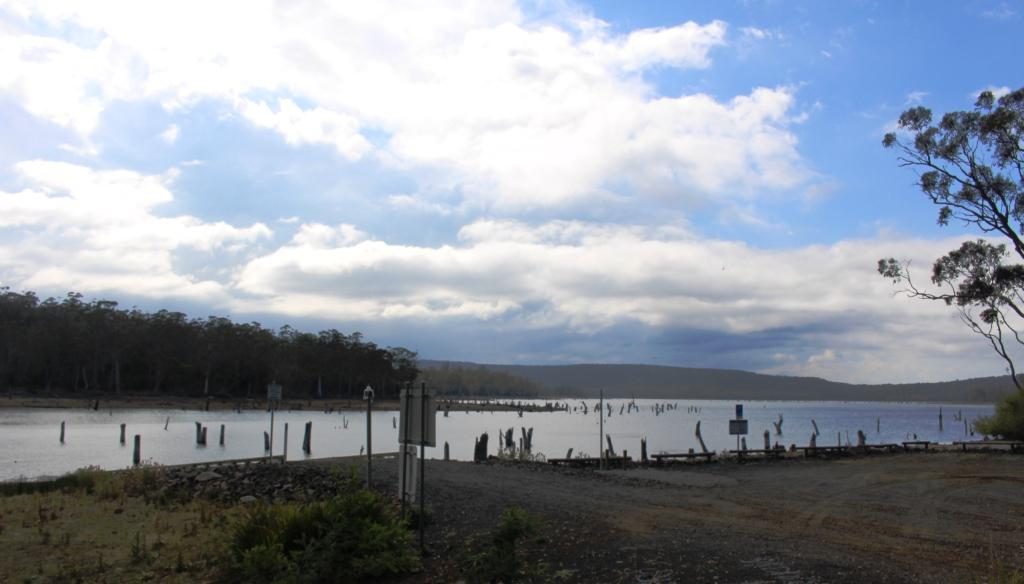
The lake has tourist facilities, so we followed the 7 km of dirt road to the picnic area. It is a smallish dam that appears to hold water for release into a larger dam. The area seems popular with fisher folk and deer hunters. There is a sort of lodge/hotel adjacent to the retaining wall of the dam.
Another Queensland registered vehicle pulled in. We spoke to the occupants, as you do. They were a Redcliffe couple caravanning around Tasmania.
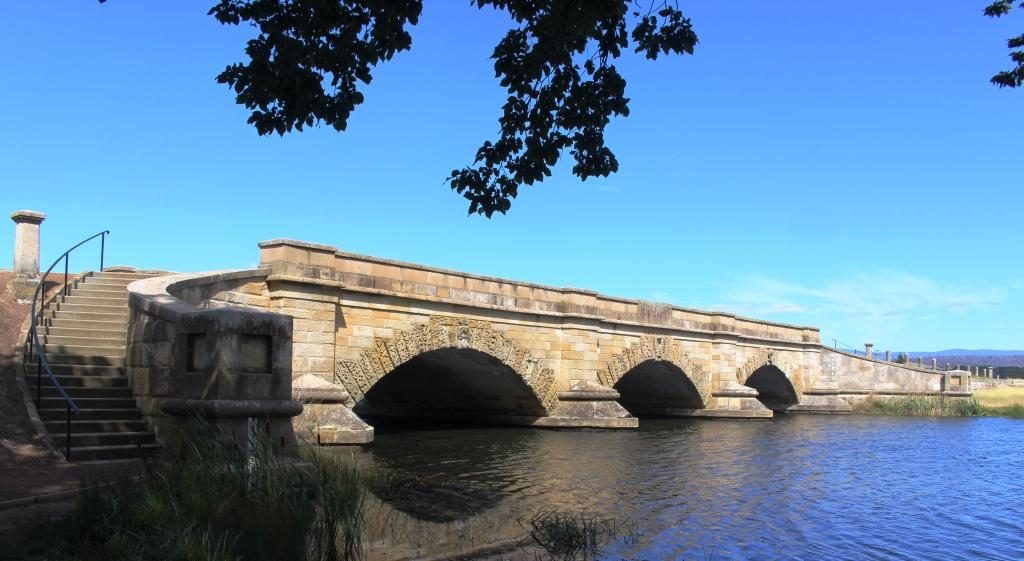
We drove on to Campbell Town and turned south to the small historic town of Ross. The convict built bridge over the Macquarie River at Ross vies with the bridge at Richmond in claims of design and age. Richmond wins at 1825 but Ross is not far behind, built just eleven years later. The Ross bridge has a greater amount of intricate stone work.
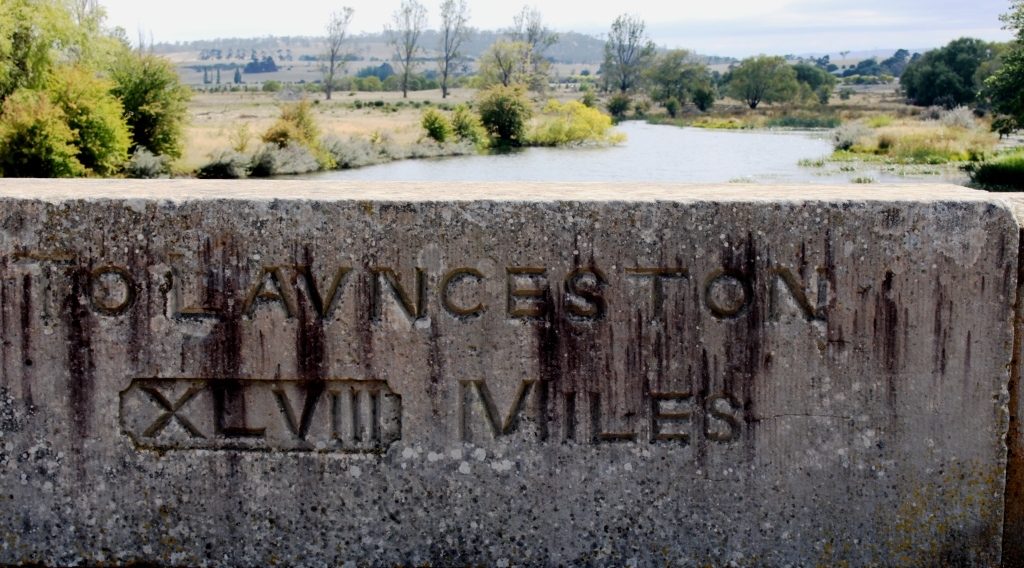
Ross has been bypassed by the highway. The town does not appear to have been adversely effected by the change. The streets are wide and lined with British Elms. Every building in the main street is old, many historic. Businesses operate from historic structures and people live in houses getting on towards 200 years old.
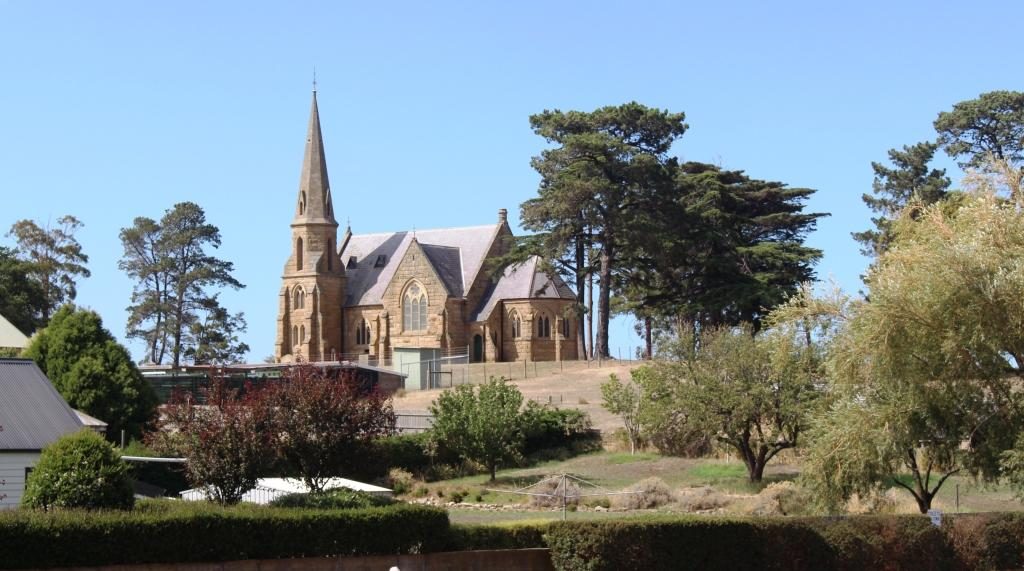
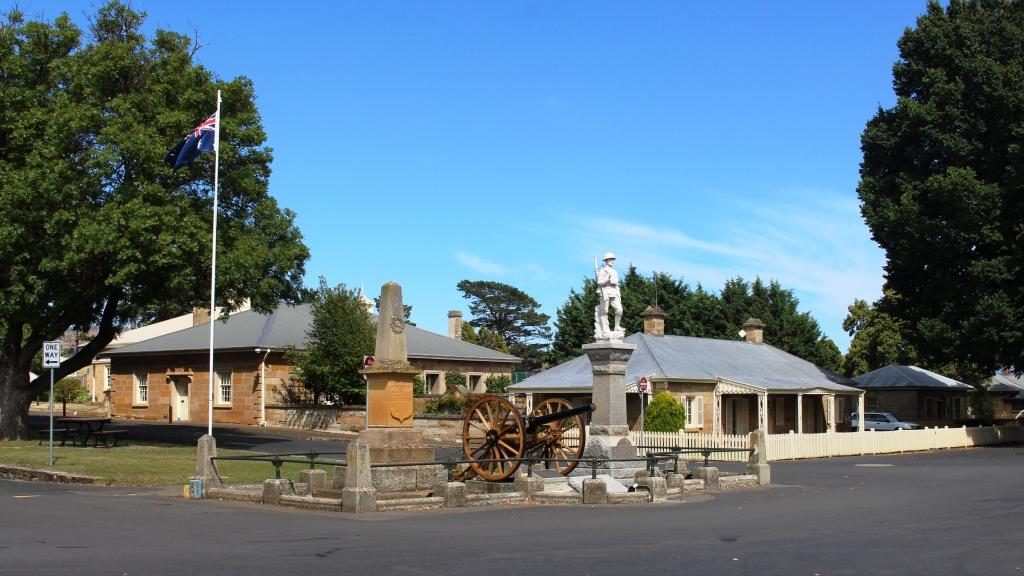
Ross has a wool centre building that tells the story of wool production in Tasmania and offers a range of woollen clothes for both ladies and men. There are samples of unprocessed wool and information on the development of merino sheep in Tasmania. Wool is still a vital product to this area. We drove past many flocks of sheep grazing on the pastures. The grass was not as lush as we had seen the day before but greener and more plentiful than in the west and highlands.
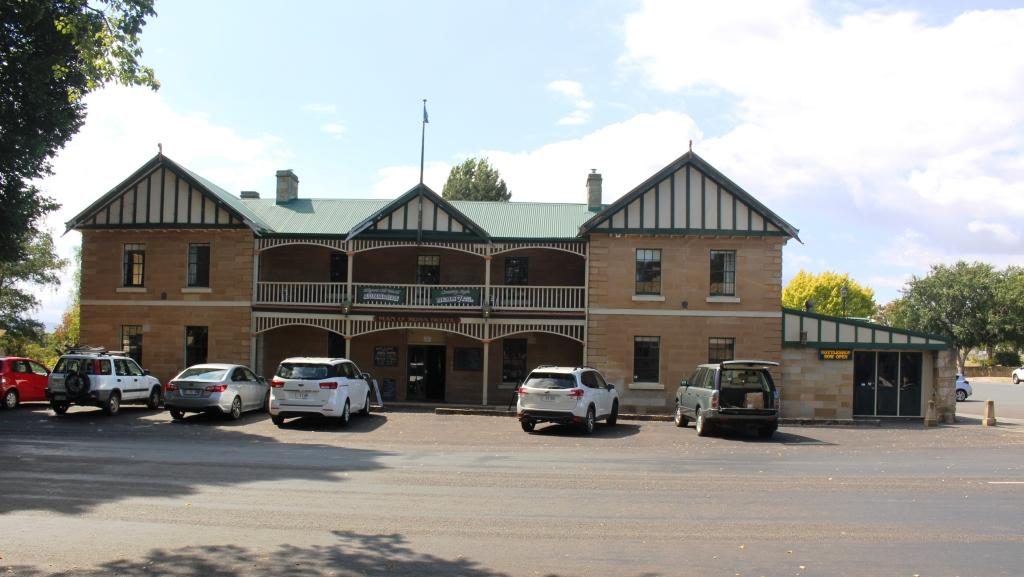
We found a bakery, one of two in town. Our choice was offering both scallop pies and “the world’s best vanilla slice”. And coffee! So the decision about lunch was easy to make. We chose the older establishment. It was the original bakery and flour mill. The old mill building is now tourist accommodation.
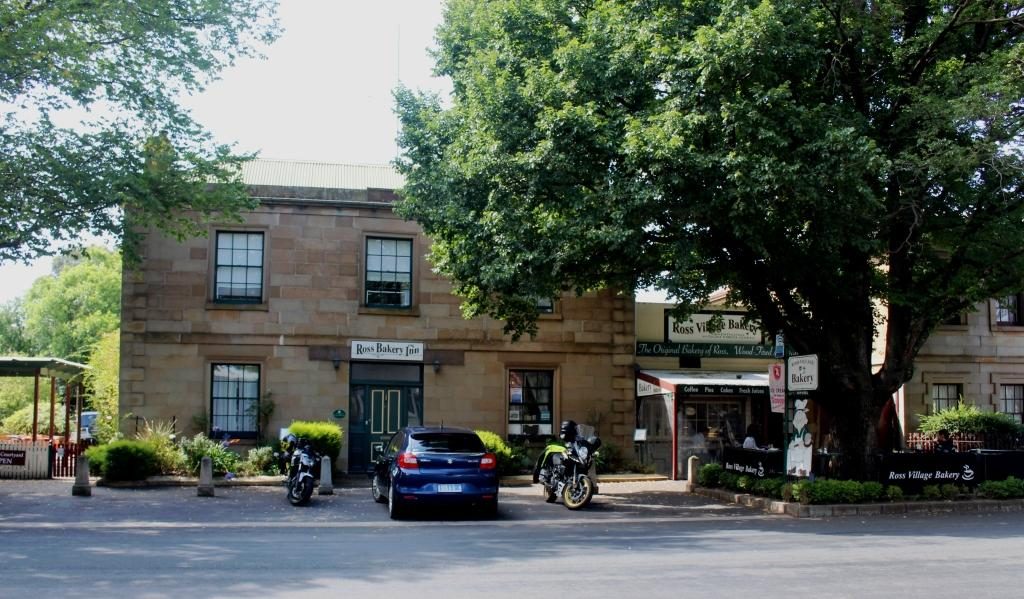
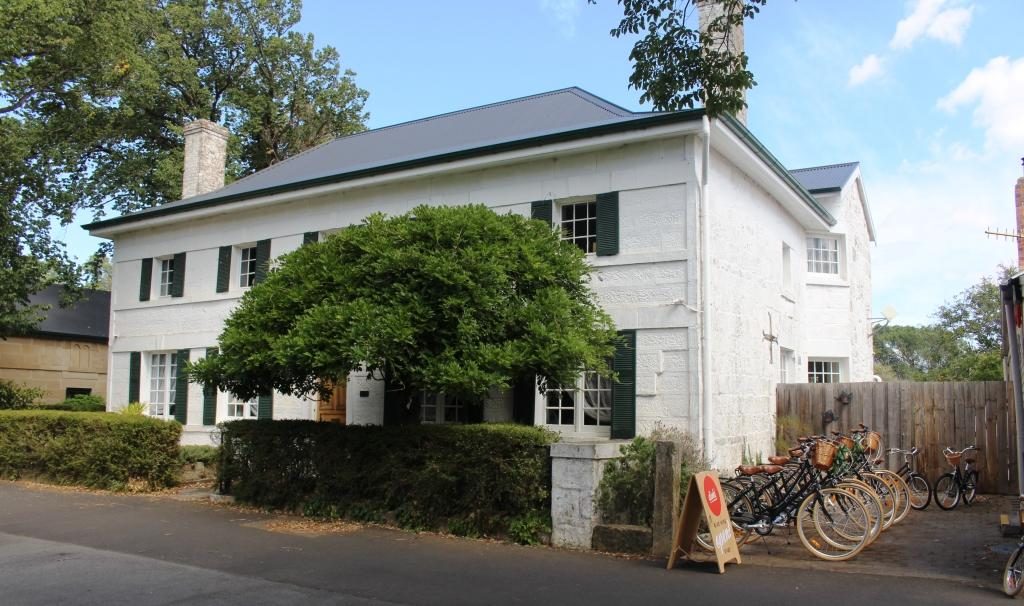
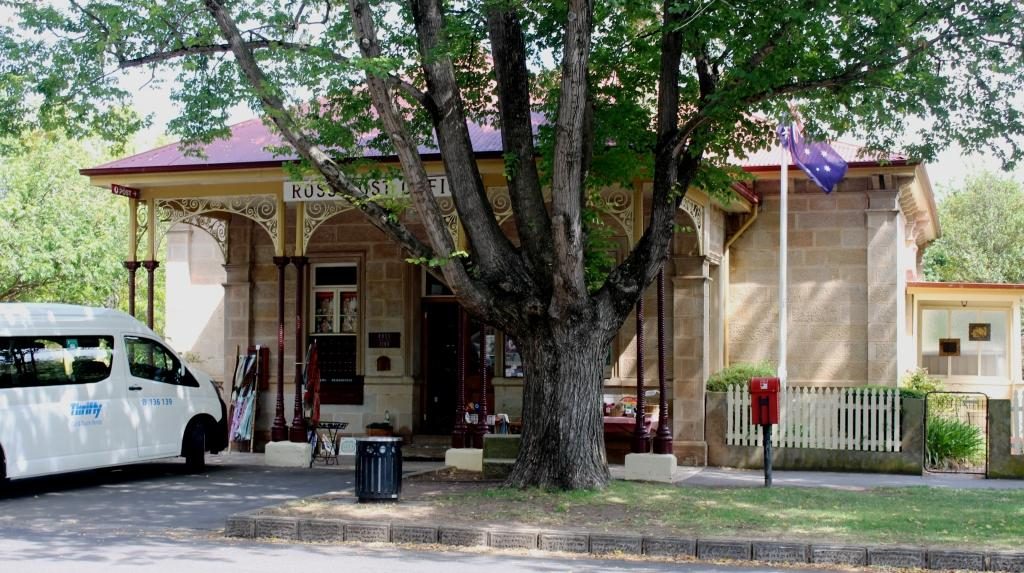
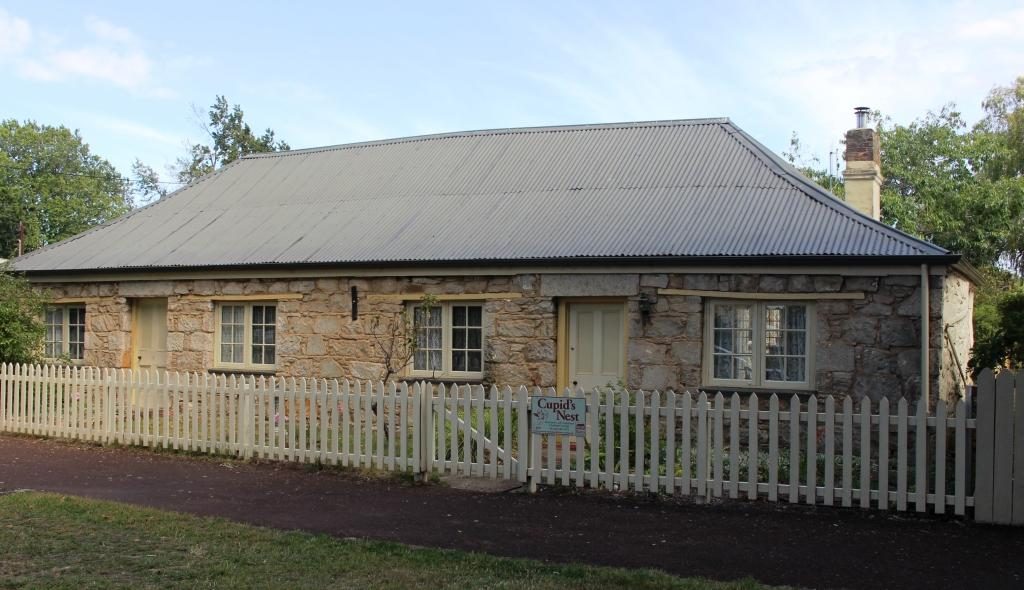
We then drove back to Campbell Town, about 10 km north. Yet another historic bridge carries highway traffic over Elizabeth River, a tributary of the Macquarie. This one is known as the Red Bridge and was convict built in 1838. Like the Ross Bridge, the Campbell Town Bridge assisted the flow of traffic between Tasmania’s two major centres and was on the same road until Ross was bypassed.
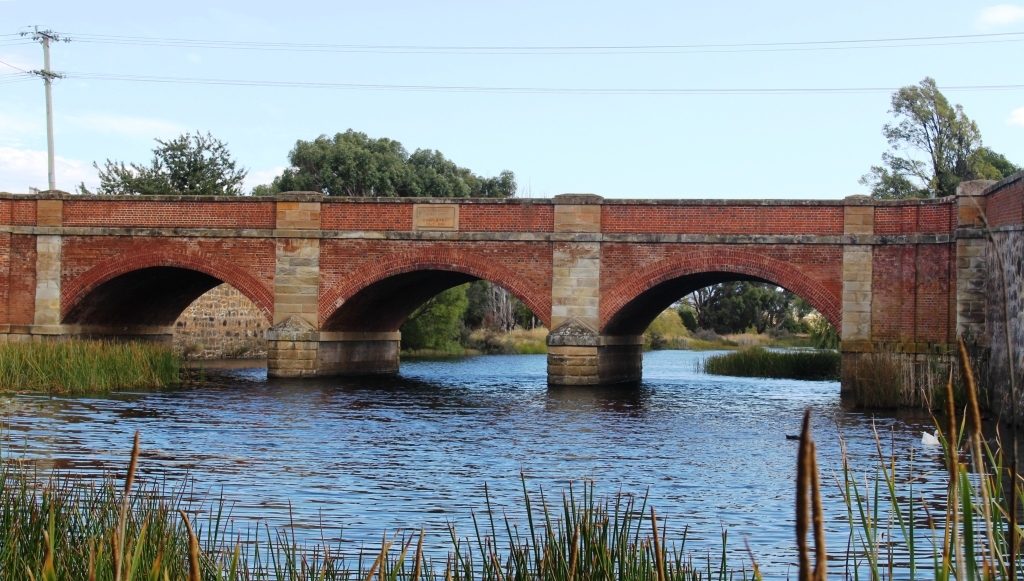
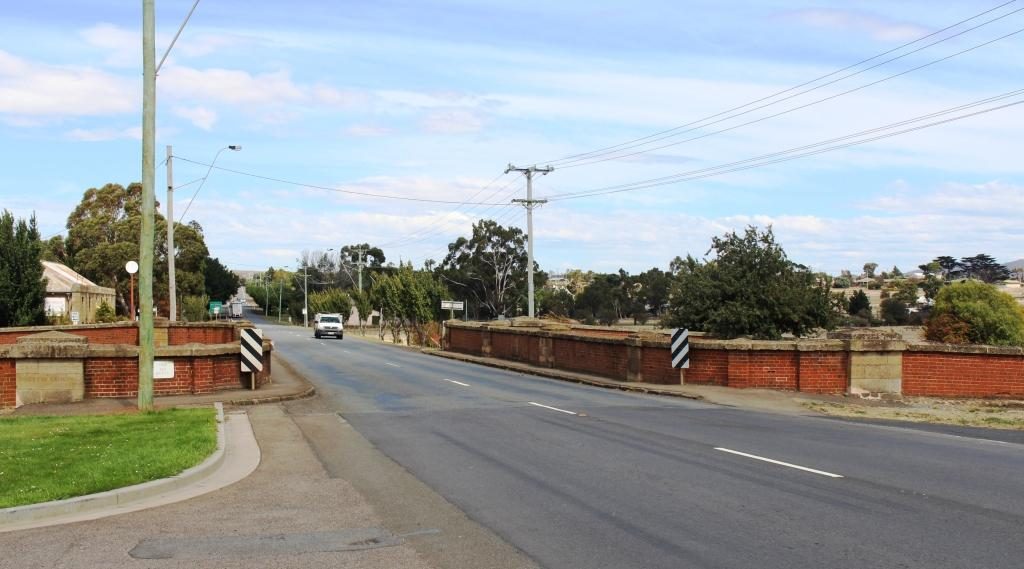
The Red Bridge at Campbell Town carries the Midland Highway over the Elizabeth River.
Campbell Town is substantially the larger centre and has a greater amount of more recent construction as well as renovated and modified buildings. But a great number of historic buildings remain, mostly still in use. We could have spent more time as there was more to see.
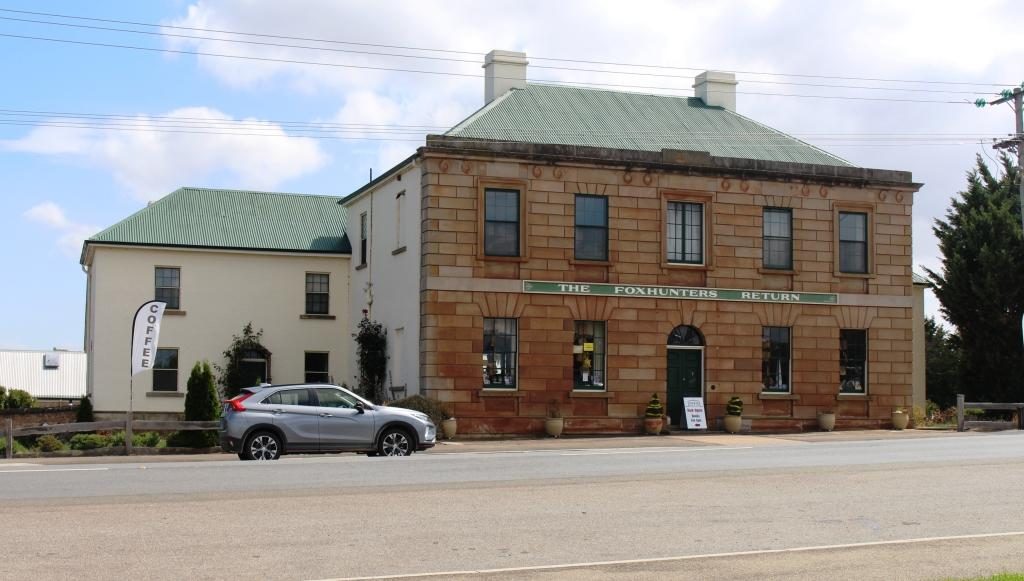
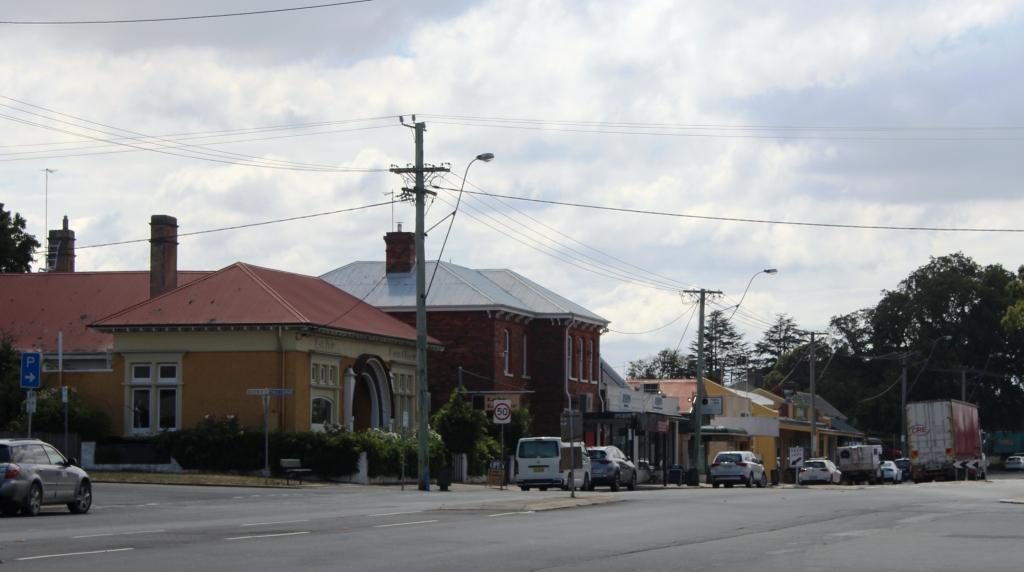
We returned home via the Heritage Highway that follows the Fingal Valley and a variety of rivers and creeks through to Conara, where it meets the Midland Highway. Then through Avoca, Fingal and St Marys. The road then crosses the coastal range over Elephant Pass on a narrow, steep winding route until it meets the coast highway about 17 km north of Bicheno.
It was quite a varied and interesting drive. For much of the distance we were running beside and continually crossing a railway line that showed evidence of use. At Fingal we saw a coal washing plant and a bit further on the turn to a colliery. Question answered.
Between Bicheno town and port a rocky hill rises with a lookout on top, which must have great views all around. I am left with this assumption unproved because after a full day, with much walking, I lacked the energy to climb it.
